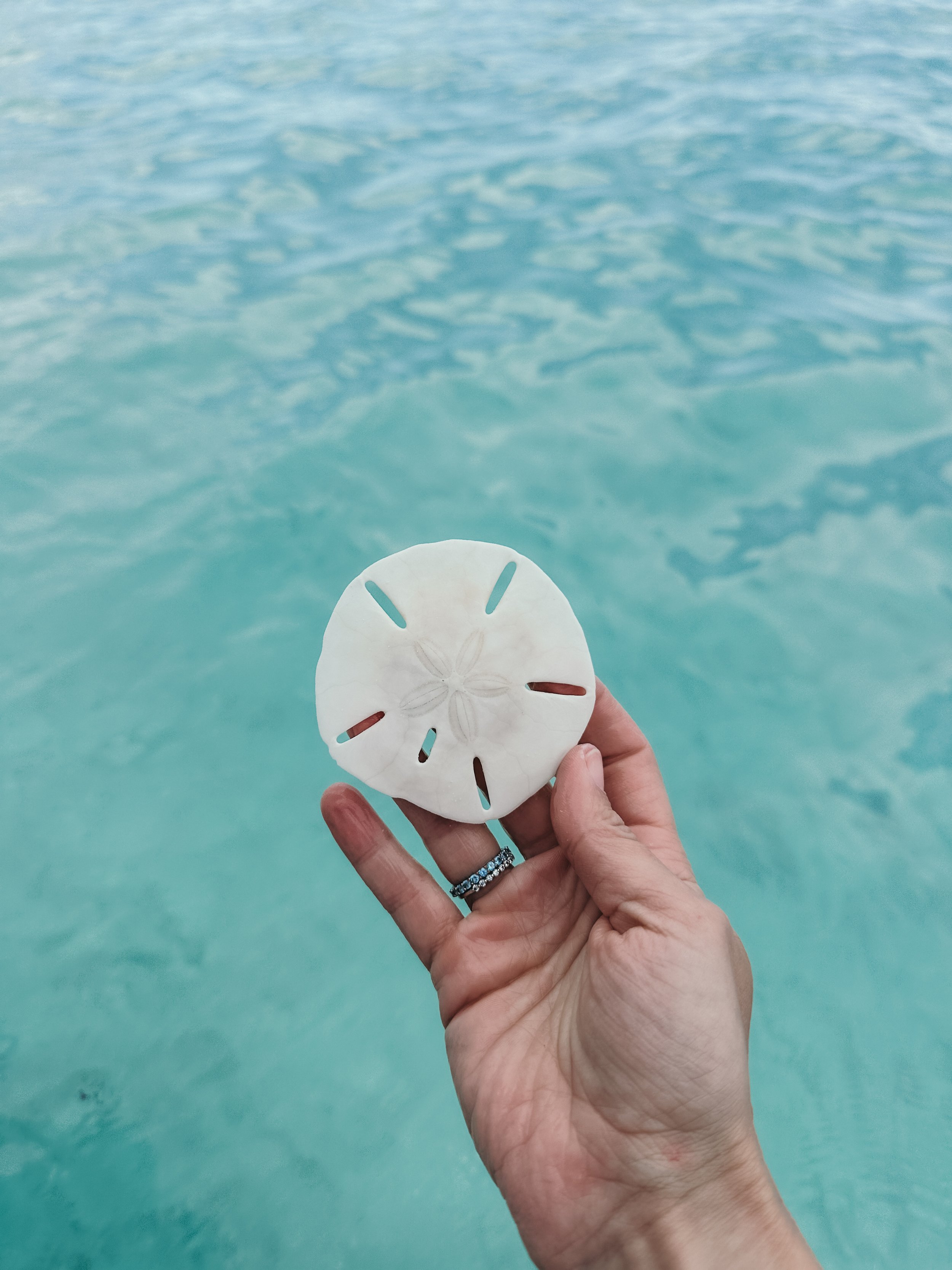Beachcombing often brings the excitement of discovering sand dollars, those fascinating, delicate treasures of the sea. However, it’s important to distinguish between live sand dollars and those that are no longer alive to ensure we respect and preserve marine life. Here’s how you can tell the difference:
Color:
Live Sand Dollar: Typically, live sand dollars are dark in color, ranging from brown to purple. This coloration helps them blend into their sandy environment.
Dead Sand Dollar: When sand dollars die, they turn white or pale beige as their soft tissues disintegrate, leaving only the skeleton, or “test.”
Texture:
Live Sand Dollar: The surface of a live sand dollar is covered with tiny, velvety spines that can move. These spines help the sand dollar to burrow and move along the ocean floor.
Dead Sand Dollar: The test of a dead sand dollar feels smooth and lacks the velvety texture. The spines are gone, leaving a hardened shell.
Movement:
Live Sand Dollar: If you observe closely, you might see a live sand dollar's spines slowly moving. If you gently pick it up, you might also notice it leaving a small imprint in the sand where it was resting.
Dead Sand Dollar: A dead sand dollar won’t show any movement. It will be stationary and rigid.
Habitat:
Live Sand Dollar: Typically found partially buried in the sand, especially in the intertidal zone. They live in groups and prefer areas with gentle currents.
Dead Sand Dollar: Often found washed up on the beach, far from where live ones typically reside.
Response to Touch:
Live Sand Dollar: When gently touched, a live sand dollar might exhibit a slight movement of its spines, indicating it's alive.
Dead Sand Dollar: A dead sand dollar will remain completely still when touched.
Ethical Collection
If you find a live sand dollar, it's best to leave it in its natural habitat to continue playing its role in the ecosystem. If you find a dead one, feel free to admire its beauty and consider it a treasure to take home. Always remember to collect responsibly and leave the environment as you found it, preserving it for others and future marine life.
By understanding and respecting the differences between live and dead sand dollars, we can enjoy the beauty of our beaches while ensuring the protection and conservation of marine life.




